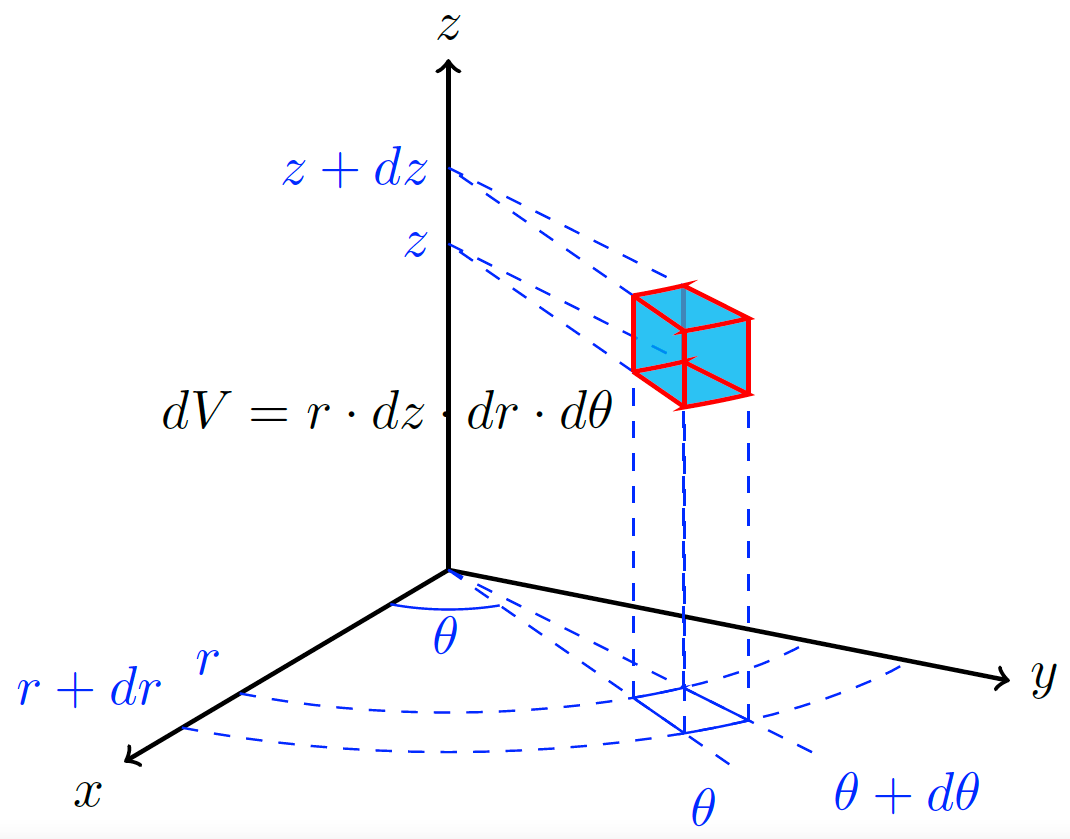Edit and compile if you like:
\documentclass{article}\usepackage{tikz}\usepackage{amsmath,amssymb,amsfonts}\usepackage{tikz-3dplot}\usetikzlibrary{math}\usepackage{ifthen}\usepackage[active,tightpage]{preview}\PreviewEnvironment{tikzpicture}\setlength\PreviewBorder{1pt}%% File name: differential-of-volume-cylindrical-coordinates.tex% Description:% A geometric representation of the differential of volume% in cylindrical coordinates is shown.%% Date of creation: May, 29th, 2021.% Date of last modification: October, 9th, 2022.% Author: Efraín Soto Apolinar.% https://www.aprendematematicas.org.mx/author/efrain-soto-apolinar/instructing-courses/% Source: page 121 of the% Glosario Ilustrado de Matem\'aticas Escolares.% https://tinyurl.com/5udm2ufy%% Terms of use:% According to TikZ.net% https://creativecommons.org/licenses/by-nc-sa/4.0/% Your commitment to the terms of use is greatly appreciated.%\begin{document}%\begin{center}\tdplotsetmaincoords{70}{120}%\begin{tikzpicture}[tdplot_main_coords,scale=1.5]% Coordinates of the location of the differential of volume\pgfmathsetmacro{\x}{1}\pgfmathsetmacro{\y}{1.5}\pgfmathsetmacro{\z}{1.5}% compute the coordinates in cylindrical coordinates\pgfmathsetmacro{\radio}{sqrt(\x*\x+\y*\y)}\pgfmathsetmacro{\angulo}{atan(\y/\x)}
Click to download: differential-of-volume-cylindrical-coordinates.tex • differential-of-volume-cylindrical-coordinates.pdf
Open in Overleaf: differential-of-volume-cylindrical-coordinates.tex
See more on the author page of Efraín Soto Apolinar.


